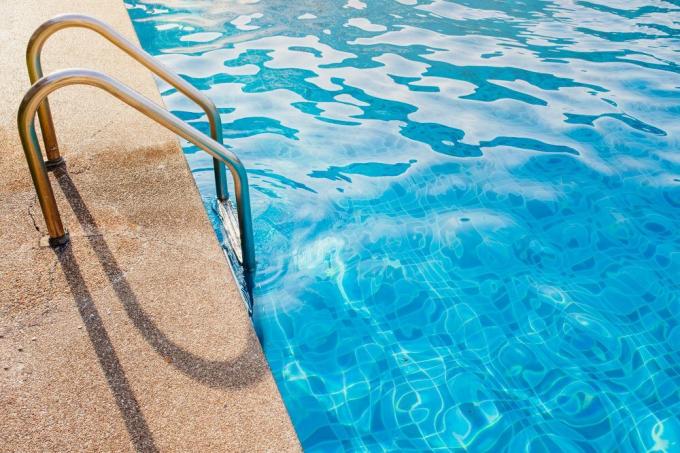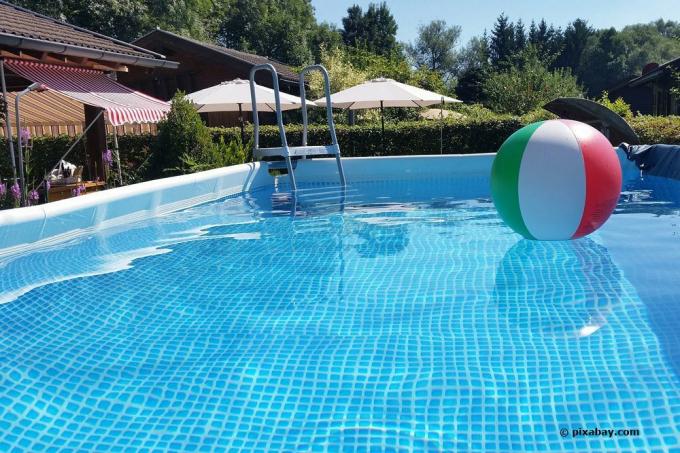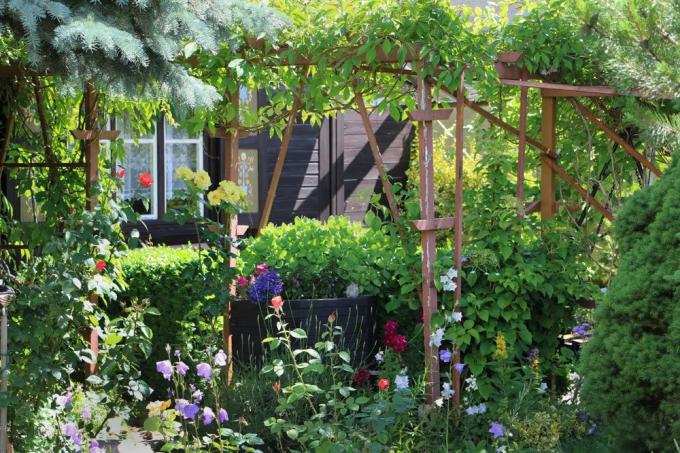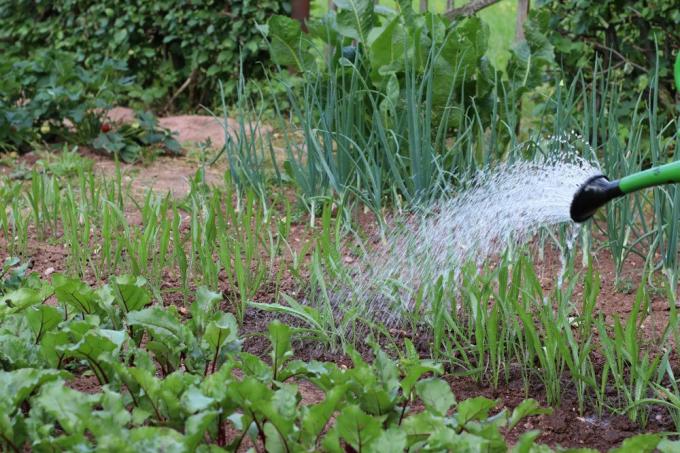
table of contents
- Pool water
- Amount of chlorine
- Chlorine tablets
- Chlorine granulate
- Liquid chlorine
- Shock chlorination
- Chlorine requirement
- Chlorinated water
Anyone who owns a pool or a larger swimming pool in the garden will probably use chlorine for bacteria-free and clean water. But what to do with the chlorinated water when the pool and paddling pool have to be drained? The Plantopedia guide has taken on the topic and clarifies whether plants can be watered with it.
Pool water
Can you water flowers with chlorinated water - is pool water harmful?
House owners or allotment garden owners often ask themselves whether they can safely drain the chlorine-containing water into the garden because they do not know to what extent their flowers, herbs and shrubs as well as the lawn will react. Chlorine is a chemical that attacks many substances and it sounds logical at first if sensitive plants in particular cannot survive this unscathed. But experts disagree, as long as certain factors are taken into account.
Amount of chlorine
Chlorine consistency / amount
Basically, a crucial point is the consistency of the chlorine for pool cleaning and the amount of it used. This is relevant because some consistencies dissolve and break down faster than others. The amount of chlorine also determines the content in the water, which is ultimately decisive for whether flowers can be watered with chlorinated water from the pool.

Chlorine tablets
In tablet form and when added to pool water, the chlorine decomposes very slowly but evenly. This means that with each new tablet a certain amount of chlorine is released, which is more or less constant until the tablet has completely dissolved. Strong water movements from swimming or the use of water and filter pumps can increase the discharge quantities. Before draining the water into the garden, onto the lawn or into the flowerbed, the current chlorine content should therefore always be measured beforehand. Chlorine tablets are difficult to dose down to the smallest milligram.

Chlorine granulate
Due to the loose unit of chlorine granulate, it is easier to divide the dosage than a chlorine tablet. This means that the total chlorine content can be better adjusted and accordingly more easily determined. In addition, granules usually dissolve much faster. As a result, it can also be broken down more quickly when pouring and the chlorine content is reduced accordingly. Nevertheless, a previous salary measurement is advisable here to make sure that no damage is caused when pouring.

Liquid chlorine
If you use liquid chlorine to disinfect the pool water, you avoid a decomposition time compared to other consistencies. So you always know that the chlorine level in the water is dropping every hour. The longer it has been since the last chlorination, the better the pool water is for watering flowers and draining the water becomes increasingly harmless. Depending on how high the chlorine concentration in the liquid chlorine is, the degradation takes between one and two days until the pool water is "pourable".
Shock chlorination
Shock chlorination is undertaken when the water appears dirty above average and the water needs to be cleaned quickly. Impact chlorination is generally associated with a high proportion of chlorine. If irrigation water is removed immediately after a shock chlorination or the pool water is drained off shortly afterwards, that is The risk is very high that your flowers and bushes as well as the lawn in the worst case even life-threatening damage from it wear. After a shock chlorination, watering the flowers or draining water into the garden for at least a week is not advisable.

Chlorine requirement
In nature and in botanical science, chlorine is viewed as a trace element. It is found everywhere in nature as an aqueous solution and is absorbed through the roots and in some cases also through the leaves. However, this chlorine is a chloride anion (Cl-), or chloride for short. In healthy plants, an average of between two and 20 milligrams of this is found. Sodium hypochlorite, which is similar to the naturally occurring chlorine, is usually used for pools.
For some plants, however, the requirement is far below that, so that lower values of 10 to 100 times are completely sufficient for these. In the case of an oversupply of chlorine, symptoms of poisoning occur, while serious reactions are not to be expected in the case of a lack of chlorine. This depends on the particular sensitivity of the different flowers / plants to chlorine.

It is divided between:
- Loves chloride, such as celery
- Compatible with chloride like roses, tulips and daffodils.
- Conditionally compatible with chloride like conifers
- Chloride sensitive like sunflowers or daisies and firs
Chlorinated water
Chlorine - yes or no?
There is no general answer to the question. In principle, flowers planted in beds tolerate chlorinated water better than in pots, because there the water can sink laterally and deeper. But experience shows that a chlorine level of less than 0.3 milligrams per liter does not pose a health threat to all flowers and the lawn. In some cases it can be observed that, although growth slows down, the density improves. This is often the case with lawns and cruciferous plants, for example.

TIP: If you are not sure about the chlorine content in the pool or are completely undecided, you can take irrigation water and simply leave it for a few days. This way it breaks down faster and you can use it for watering regularly without risk.

Conclusion
Despite the chlorination, the pool water can be used as irrigation water for most flowers. If the pool is left out and there are still chlorine residues in the pool, this will not harm flowers sensitive to chlorine if the content is below 0.3 milligrams per liter of water. Therefore: always check the level before draining or watering the flowers or leave the pool for a few days without chlorination, then you do not have to worry.
